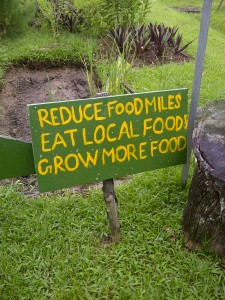Please see this link to view the USDA web page on BSE, including frequently asked questions and answers, which are also provided below:
Q. What is Bovine Spongiform Encephalopathy?
A. Bovine spongiform encephalopathy (BSE), sometimes referred to as “mad cow disease”, is a chronic degenerative disease affecting the central nervous system of cattle. The disease belongs to the group of transmissible spongiform encephalopathies, which also includes scrapie of sheep and goats and chronic wasting disease (CWD) of elk and deer.
Q. What are signs of BSE in cattle?
A. Cattle affected by BSE experience progressive degeneration of the nervous system. Affected animals may display changes in temperament (nervousness or aggression), abnormal posture, incoordination and difficulty in rising, decreased milk production, or loss of condition without noticeable loss of appetite. The causative agent of the disease is not completely characterized, and there is neither any treatment nor a vaccine to prevent the disease. The incubation period is from 2 to 8 years. Following the onset of clinical signs, the animal’s condition deteriorates. This process usually takes from 2 weeks to 6 months.
Q. Is the U.S. food supply safe from BSE?
A. Yes. A system of strong interlocking safeguards protects human and animal health, as well as food safety, in the United States. These safeguards include the removal of specified risk materials (SRMs) – those tissues that may contain the BSE agent in an infected animal – from the human food chain.
Inspectors from USDA’s Food Safety and Inspection Service also prevent non-ambulatory disabled cattle from entering the human food supply. In addition, they prevent certain slaughter practices that might present a risk of transmission of BSE. FSIS inspectors also condemn any cattle that display clinical signs of neurological disease or central nervous system disorders. To prevent the disease’s transmission to people, the single most important food safety measure is to avoid human consumption of SRMs. Inspectors in every slaughterhouse in the United States work to ensure these and other food safety standards are met.
Q. Is cow’s milk a source of BSE?
A. No. Scientific research indicates that BSE cannot be transmitted in cow’s milk, even if the milk comes from a cow with BSE.
Q. Are milk and milk products BSE-safe?
A. Yes. The World Health Organization (W HO) has stated that tests on milk from BSE- infected animals have not shown any BSE infectivity. Milk and milk products, are, therefore considered safe.
Q. What is being done to protect animal health?
A. The primary animal-health protective measure is a feed ban. In 1997, the FDA implemented regulations that prohibit the feeding of most mammalian proteins to ruminants, including cattle. This feed ban is the most important measure to prevent the transmission of the disease to cattle. The feed ban was strengthened in 2008, by additional prohibitions on those tissues that have the highest risk of transmitting BSE. These additions to the feed ban prohibit the use of brain and spinal cord from cattle 30 months of age and older for use in any animal feed.
Q. How effective are the safeguards against BSE?
A. Evidence shows that our systems and safeguards to prevent BSE are very effective, as are similar actions taken by countries around the world. In 2011, there were only 29 worldwide cases of BSE, a dramatic decline and 99 percent reduction since the peak in 1992 of 37,311 cases. This is directly attributable to the impact and effectiveness of feed bans as a primary control measure for the disease.
Q. When did BSE first emerge?
A. BSE was first diagnosed in 1986 in Great Britain. Since that time, more than 190,000 cases have been confirmed world-wide. The number of cases peaked in 1992, and has declined continuously since that time, with only 29 cases worldwide in 2011.
Q. How did BSE emerge?
A. There are different scientific hypotheses concerning the origins of BSE. The disease may have been caused by feeding cattle rendered protein produced from the carcasses of scrapie-infected sheep or cattle with a previously unidentified transmissible spongiform encephalopathy (TSE).
Q. What is the agent that causes BSE?
A. BSE is a progressive neurological disorder of cattle that research suggests is caused by a pathogenic form of a normally occurring protein known as a prion (PrP.) BSE belongs to a family of diseases known as transmissible spongiform encephalopathies (TSEs). In addition to BSE, the TSEs include, among others, scrapie in sheep and goats, chronic wasting disease in deer and elk, transmissible mink encephalopathy, and Creutzfeldt-Jakob disease (CJD) in humans.
The pathogenic form of the prion protein (PrPSc) is extremely resistant to heat and to normal sterilization processes, making it difficult to inactivate with standard methods used to process human food and animal feed. Although rendering and other processes can partially inactivate PrPSc, the risk mitigation strategies (for meat and meat products) rely mainly on the elimination of tissues and organs known to harbor BSE infectivity in infected animals, which are known as specified risk materials (SRM).
Q. What is a prion?
A. Prions (pronounced pree-ons) are the only non-DNA-based agent capable of infecting and reproducing themselves in a living host. Proteins similar to prions already exist in the nervous tissue cell membrane in normal animals, but in a harmless form. After an incubation period of many years, prions in an infected host reproduce by recruiting the host’s similar, harmless protein and changing its shape to that of the prion.
Q. Are there any known tests to detect the disease in cattle?
A. Currently, there is no test to detect the disease in a live animal. BSE is confirmed by either histopathological examination of brain tissue or by the detection of the abnormal form of the prion protein via one of several methods, also requiring brain tissue.
Q. What are specified risk materials?
A. Specified risk materials, or SRMs, are the parts of cattle that could potentially harbor the BSE agent in an infected animal. Research has demonstrated infectivity in the following tissues, at different times in an infected animal’s life: brain, spinal cord, retina, distal ileum, dorsal root ganglion, trigeminal ganglion and tonsil. In U.S. regulations, SRMs are defined as the brain, skull, eyes trigeminal ganglia, spinal cord, vertebral column (excluding the vertebrae of the tail, the transverse processes of the thoracic and lumbar vertebrae, and the wings of the sacrum) and dorsal root ganglia of cattle 30 months of age and older. SRMs also include the tonsils and distal ileum of all cattle.
Q. Why can’t we test all beef for BSE safety?
A. BSE tests are not conducted on cuts of meat, but involve taking samples from the brain of a dead animal to see if the infectious agent is present. We know that the earliest point at which current tests can accurately detect BSE is 2-to-3 months before the animal begins to show symptoms. The time between initial infection and the appearance of symptoms is about 5 years. Since most cattle that go to slaughter in the United States are both young and clinically normal, testing all slaughter cattle for BSE might offer misleading assurances of safety to the public.
The BSE surveillance program is not for the purposes of determining food safety. Rather, it is an animal health surveillance program. USDA’s BSE surveillance program allows USDA to detect the disease if it exists at very low levels in the U.S. cattle population and provides assurances to consumers and our international trading partners that the interlocking system of safeguards in place to prevent BSE are working.
Q. How does USDA conduct surveillance for BSE in the U.S.?
A. USDA has an ongoing, comprehensive, interagency surveillance program to detect signs of BSE in the United States. USDA’s BSE surveillance program samples approximately 40,000 animals each year and targets cattle populations where the disease is most likely to be found. The targeted population for ongoing surveillance focuses on cattle exhibiting signs of central nervous disorders or any other signs that may be associated with BSE, including emaciation or injury, and dead cattle, as well as non-ambulatory animals. Samples from the targeted population are taken at farms, veterinary diagnostic laboratories, public health laboratories, slaughter facilities, veterinary clinics, and livestock markets. In addition, approximately 5,000 samples each year are collected from renderers and similar salvage facilities.
USDA’s National Veterinary Services Laboratories (NVSL) in Ames, IA, along with contracted veterinary diagnostic laboratories, use rapid screening tests as the initial screening method on all samples. Any inconclusive samples are sent to NVSL for further testing and analysis.
Q. What is USDA doing to prevent the introduction of BSE into the United States?
A. Since 1989, APHIS has restricted imports of ruminants and certain ruminant products that could present a risk of bovine spongiform encephalopathy, or BSE. Although these regulations have evolved since that time, we continue to have a strong system in place to prevent the entry of animals infected with BSE into the United States. Today, APHIS has a system of categorizing countries based on risk and establishing appropriate import prohibitions and restrictions based on that risk classification.
Q. Have there been any detections of BSE in the United States in the past?
A. Yes. On April 24, 2012 USDA announced that it had confirmed a case of BSE in a dairy cow in California. Before this latest detection, USDA had diagnosed three cases of BSE in the United States – the first in December 2003 in a cow imported from Canada to Washington State, and two subsequent cases with cows born and raised in the United States – one in Texas and one in Alabama. USDA scientists have identified and characterized all three of the BSE cases, using various laboratory diagnostic methods. These include internationally accepted procedures for histopathology, immunohistochemistry, and the Western blot.
Q. Where can I find more information on BSE and its most recent detection in the United States?
A. USDA will continue to communicate findings in a timely and transparent manner. To find up-to-date information, visit our website at http://www.aphis.usda.gov/animal_health/animal_diseases/bse/index.shtml
 Each of California’s 78 fairs is a reflection of the local community, and the famed Calaveras County Fair and Jumping Frog Jubilee is no exception. It’s coming up May 17-20, and the folks here in Sacramento are getting a head start on the festivities with the annual Capitol Frog Jump on May 2.
Each of California’s 78 fairs is a reflection of the local community, and the famed Calaveras County Fair and Jumping Frog Jubilee is no exception. It’s coming up May 17-20, and the folks here in Sacramento are getting a head start on the festivities with the annual Capitol Frog Jump on May 2.







